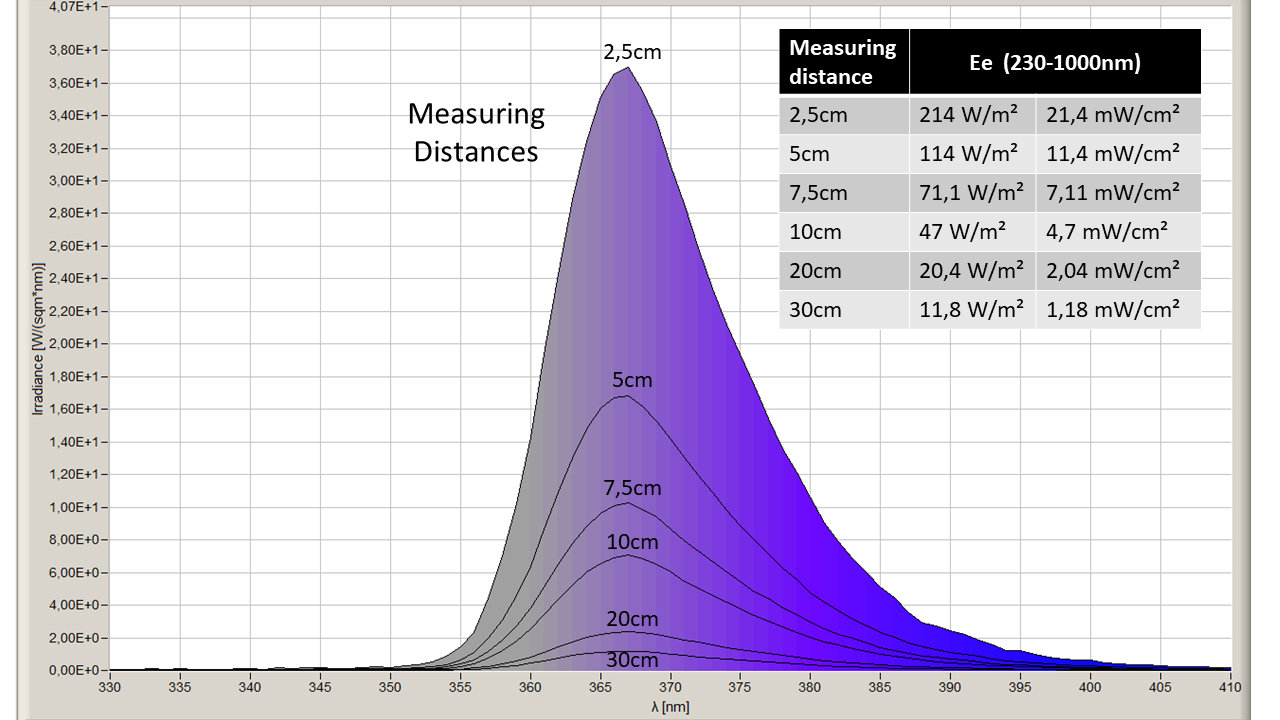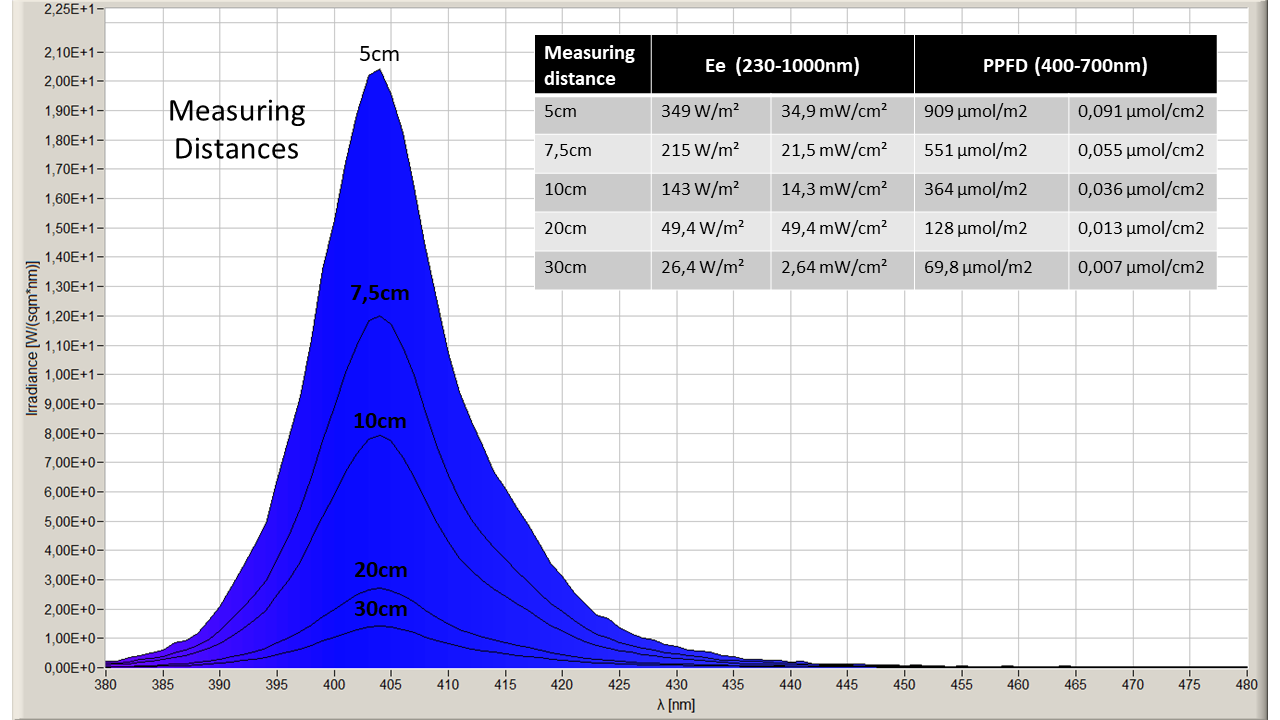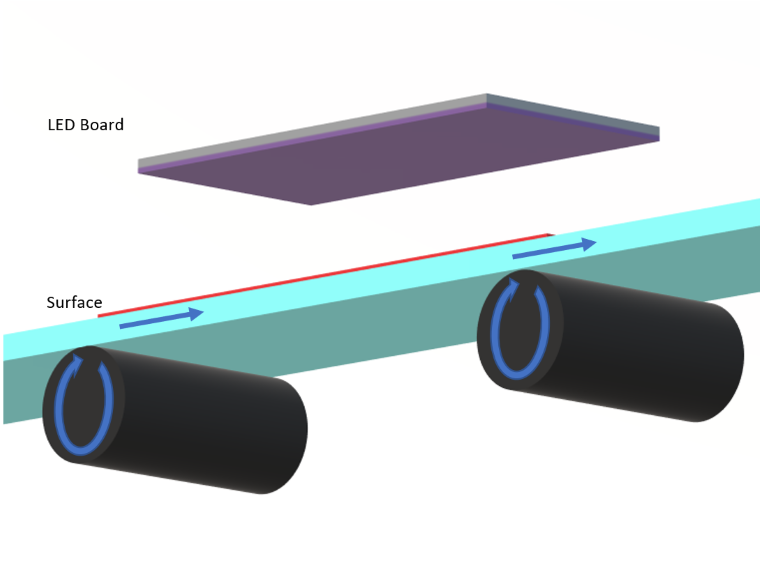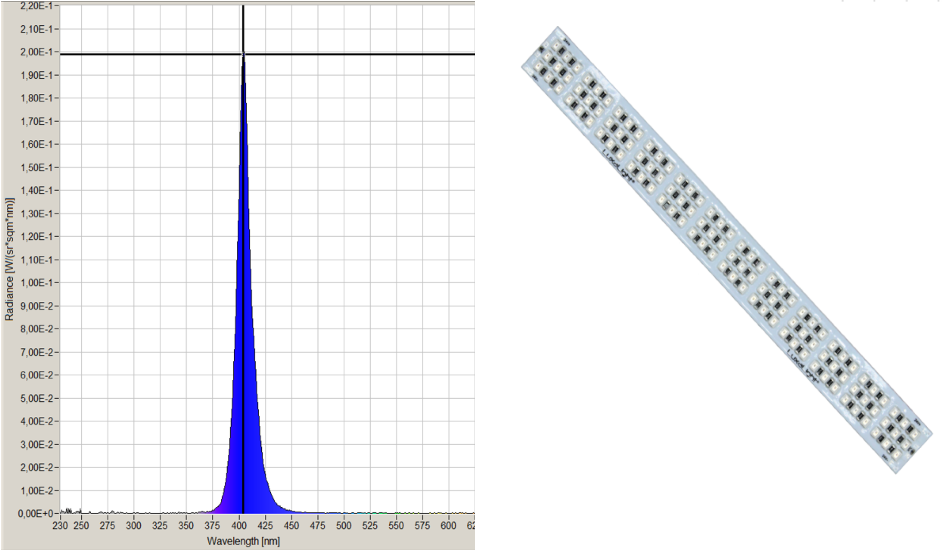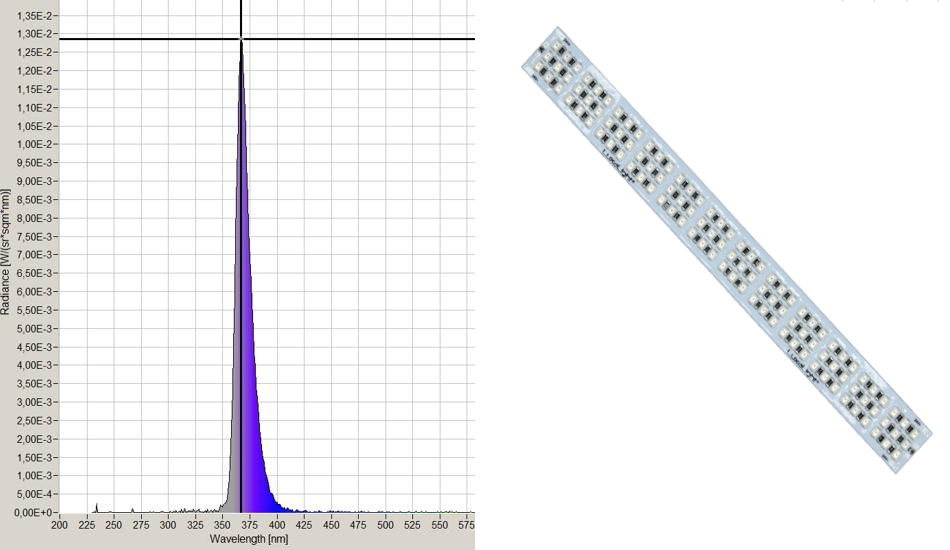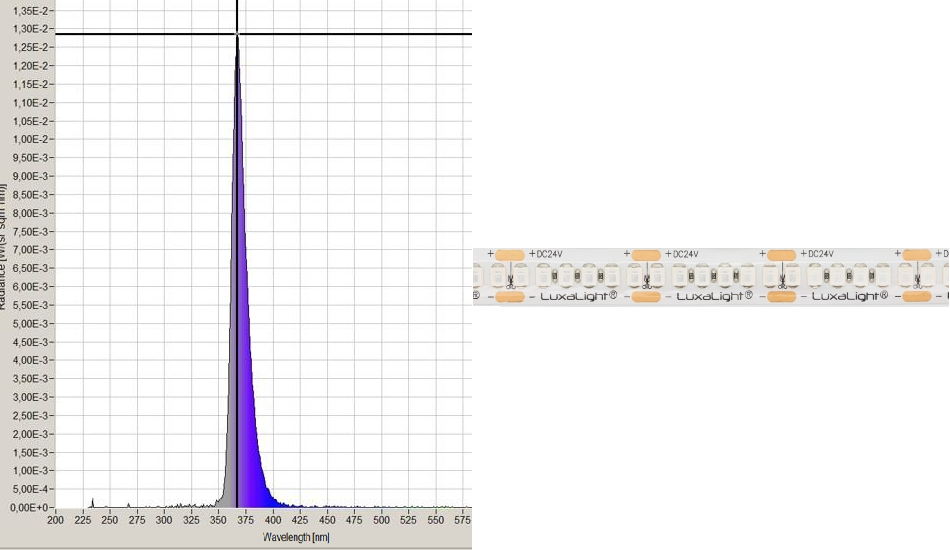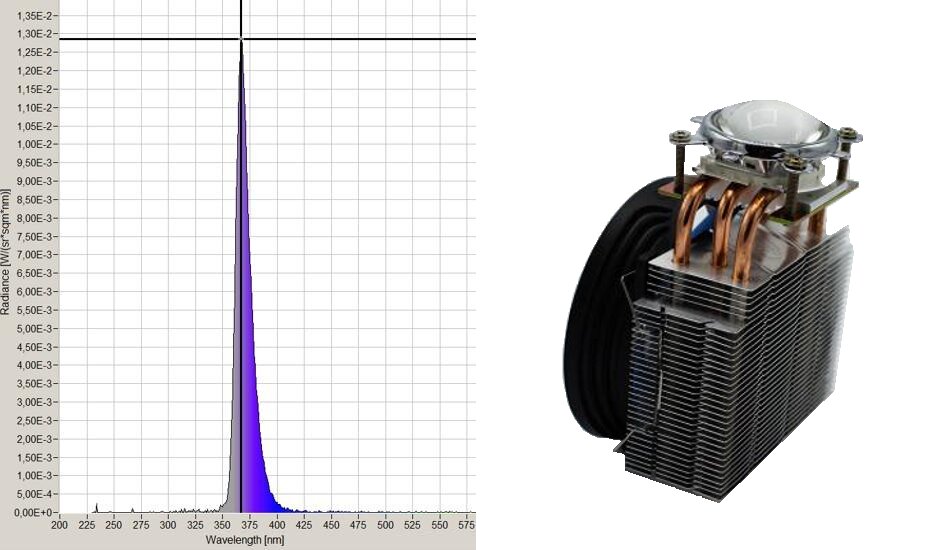Accuracy in radiance
Accuracy in radiance is important because a large deviation can cause materials not having the desired/ expected degradation.
Wavelengths
UV-A LED engines (such as 365nm and 395nm) can be designed to have multiple wavelengths. These wavelengths can (for example) be controlled separately. LED engines can also be produced with an extremely high UV output.
Heat management
By combining the UV-A LED engine with a matching heat sink, higher powers and radiation are achievable. With large capacities it is necessary to keep the heat management optimal, LED engines need to be equipped with a heat sink or active cooling.
Quartz glass
The UV LED engine can be equipped with quartz glass. Quartz glass protects the LED engine and ensures uniform UV radiation.
Triggering
Triggers can be easily and flexibly configured using the MaNima Configurator, MaNima Cloud and UDP commands. The MaNima Pollux Industry has a wide range of inputs and outputs, such as digital contacts, Ethernet, Industrial Network Protocols.
Optics
The UV radiance can be bundled in a targeted place by means of a lens. The optics are available in various degrees. It is also important to ensure that the surface is irradiated evenly.
LED moulding
When the fixtures are placed in an environment with high humidity or a large mechanical load, it is better to pour the fixtures. For installations that require a high IP or IK value, a special casting resin can be poured in that allows UV rays to pass through.
Real-time monitoring
The MaNima Pollux Industry monitors all inputs and outputs of itself. The currents and voltages are measured here. If currents or other measured values are too high, the MaNima Pollux Industry can intervene autonomously to prevent calamities.
Pulse mode
Parameters such as pulse width and height, strobe characteristics and triggers can easily be configured with the MaNima Pollux Industry.
NTC
The LuxaLight LED engine is equipped with an NTC that makes it possible to measure the temperature in real time. Maximum efficiency can be achieved with real-time temperature monitoring of the LED engine.

